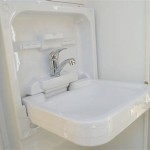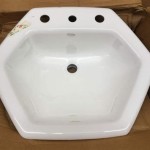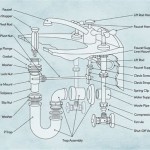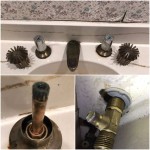Why Are There Bugs in My Bathroom Sink?
Discovering insects in the bathroom sink can be unsettling. Several factors contribute to this phenomenon, ranging from the sink's inherent attractiveness to certain pests to underlying plumbing issues. Understanding these reasons can help homeowners take appropriate preventative measures.
Potential Causes of Bathroom Sink Bugs
The presence of insects in a bathroom sink isn't necessarily indicative of uncleanliness. Several factors attract these creatures, and recognizing these factors is the first step towards effective pest control.
1. Moisture
Bathrooms are inherently humid environments. Activities like showering and handwashing introduce significant moisture into the air. Many insects, especially those commonly found in bathroom sinks, such as drain flies, thrive in damp conditions. The consistent presence of moisture creates an ideal breeding ground and attracts these pests.
2. Standing Water
Leaks in pipes or slow-draining sinks can lead to standing water. This accumulated water serves as both a drinking source and a breeding site for insects. Addressing plumbing issues promptly is essential to minimizing pest attraction.
3. Drain Access
Bathroom sinks offer direct access to the plumbing system. Cracks or gaps around the sink's drain can serve as entry points for insects. These openings allow pests to navigate from the sewer system or wall voids directly into the sink basin.
4. Organic Matter
Hair, soap residue, and other organic debris often accumulate in bathroom sink drains. This material provides a food source for certain insects, such as drain flies, whose larvae feed on decomposing organic matter. Regularly cleaning the drain can help eliminate this food source and deter pests.
5. Light
Some insects are attracted to light, particularly at night. If a bathroom light is left on, it can draw insects toward the window, and from there, they may find their way into the sink. This is particularly true for flying insects like moths and gnats.
Common Types of Bathroom Sink Bugs
Identifying the specific insects found in the sink can inform the most effective pest control strategies. Different species have different habits and attractants.
1. Drain Flies
Also known as moth flies, drain flies are small, fuzzy insects often found near drains. Their larvae thrive in the organic matter that accumulates in drains. They are characterized by their moth-like appearance and weak flight.
2. Gnats
Various gnat species might be attracted to the bathroom environment. Fungus gnats, for example, are attracted to damp soil and decaying organic matter, while fruit flies are drawn to sugary substances.
3. Silverfish
Silverfish are wingless, silvery insects that prefer damp, dark environments. They are known to feed on carbohydrates, including book bindings and paper, and may find their way into bathrooms seeking moisture.
4. Centipedes
Certain centipede species thrive in damp environments and prey on other insects. Their presence in a bathroom sink might indicate an infestation of other pests that serve as a food source.
5. Cockroaches
While less common in sinks than other pests, cockroaches can enter through drain pipes, especially if there are gaps or cracks. They seek food and water sources and may be attracted to organic material in the drain.
Prevention and Control Measures
Implementing preventive measures can significantly reduce the likelihood of insect infestations in bathroom sinks. These measures target the factors that attract pests in the first place.
1. Regular Drain Cleaning
Regularly cleaning the drain with a mixture of baking soda and vinegar or a commercial drain cleaner can help remove organic matter and kill drain fly larvae. This disrupts the breeding cycle and eliminates a primary food source.
2. Plumbing Maintenance
Addressing leaks and ensuring proper drainage is crucial. Standing water provides an ideal breeding ground for insects. Regular inspections and prompt repairs can minimize pest attraction.
3. Sealing Entry Points
Sealing cracks or gaps around the sink drain with caulk can prevent insects from accessing the sink from the sewer system or wall voids. This creates a physical barrier against pest entry.
4. Moisture Control
Proper ventilation, such as running an exhaust fan during and after showers, can help reduce humidity levels in the bathroom. Lower humidity discourages insects that thrive in damp environments.
5. Eliminate Standing Water
Ensure that there are no sources of standing water in the bathroom. This includes checking for leaks under the sink and ensuring proper drainage in the sink basin. Regularly wiping down surfaces can also help eliminate excess moisture.
7. Turn Off Lights
Turning off bathroom lights, especially at night, can reduce the attraction for light-sensitive insects. Closing blinds or curtains can further minimize the light visible from outside.
8. Professional Pest Control
For persistent infestations, contacting a professional pest control service is recommended. They can identify the specific pest, locate the source of the infestation, and implement targeted treatment strategies.

Why Are There Bugs In My Bathroom

Are Your Drains Drawing Bugs May Exterminating

What Are Common Bugs Found In The Bathroom Terminix

Bugs That Live In Household Drains

Bugs That Enter Through Pipes Drains And Overflow

Bugs In The Bathroom News

Do Silverfish Live In Drains Terminix

5 Easy Ways To Get Rid Of Drain Flies Fast

Insects In Drains Identification Guide To Drain Flies And Other Bugs Found With Photos Dengarden

5 Common Bathroom Pests You Can Spot Fantastic Services







